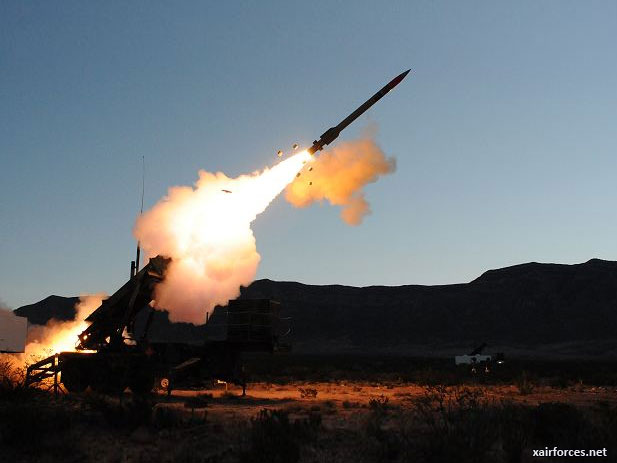
Lockheed Martin's PAC-3 Intercepts Subsonic Cruise Missile Target

Lockheed Martin's PAC-3 Missile Successfully Intercepts Cruise Missile Target During Integrated Flight Test.
Lockheed Martin's PAC-3 Missile successfully intercepted and destroyed a cruise missile target yesterday at the Utah Test and Training Range in an unprecedented interoperability demonstration utilizing the Joint Land Attack Cruise Missile Defense Elevated Netted Sensor (JLENS) and the PATRIOT system.
The test demonstrated the PAC-3 Missile Segment's unique ability to detect, track, engage and destroy a cruise missile target at extended range in an integrated air and missile defense architecture that joins netted sensors and missile defense systems to provide greater capability for the warfighter.
"The PAC-3 Missile continues to be successful against today's modern threats, and is ready for tomorrow's modern plug-and-fight air and missile defense architectures," said Richard McDaniel, vice president of PAC-3 programs at Lockheed Martin's Missiles and Fire Control business. "This effort moves us closer towards achieving the U.S. Army's vision of a truly integrated Air and Missile Defense System."
Lockheed Martin achieved the first-ever hit-to-kill intercept in 1984 with the Homing Overlay Experiment, using force of impact alone to destroy a mock warhead outside of the Earth's atmosphere. Further development and testing produced today's PAC-3 Missile, which won a competition in 1993 to become the first hit-to-kill interceptor produced by the U.S. government. The PAC-3 Missile has been the technology pathfinder for today's total conversion to kinetic energy interceptors for all modern missile defense systems.
Source: DALLAS - Lockheed Martin; issued April 26, 2012
Photo: Lockheed Martin's PAC-3 Missile Successfully Intercepts Cruise Missile (Photo by wikipedia)
(28.04.2012)
|
|
| |



• Science SEOSAT-Ingenio's lost promise for Earth observation
(28.11.2020)
Spain's satellite, the SEOSAT-Ingenio, was billed as the latest in high resolution land imaging technology. Originally, we presented what it would have done. But its launch vehicle...>>
• No Air dominance without Space dominance
(29.10.2020)
The Future Combat Air System (FCAS) will create a network of manned and unmanned platforms in the sky from fighter to drones, up to satellites. Connected to ground and maritime for...>>
• US Army Wants Electronic Jammer Weapon With Missile Defense Capabilities
(30.09.2020)
US Army officials unveiled plans on Tuesday for a vehicle-mounted electronic jamming system that will uniquely have the ability to jam incoming projectiles, fouling their targeting...>>
• Successful launch for Airbus’ Bartolomeo
(9.03.2020)
The Airbus built Bartolomeo platform has been successfully launched on 06 March from Cape Canaveral, Florida, US. Bartolomeo is now on its journey to the International Space Statio...>>
• Flight experiments for the air transport system of the future - New DLR ISTAR research aircraft arrives in Braunschweig
(20.02.2020)
Handover in the hangar of DLR’s Flight Experiments facility in Braunschweig together with representatives from science, industry, government and the media. Commissioning with first...>>
• NASA places order for three Airbus H135 helicopters
(29.01.2020)
The U.S. agency will use the aircraft for security during rocket launches, emergency medical services and qualified personnel transport....>>
• Russia Wants Answers From NASA About ALCOHOL SMELL on ISS After Dragon Docking
(1.09.2019)
Last month, outside observers marked concerns with SpaceX's Dragon 2 programme after one of the crew capsules unexpectedly exploded during a static fire test....>>
|
|
|